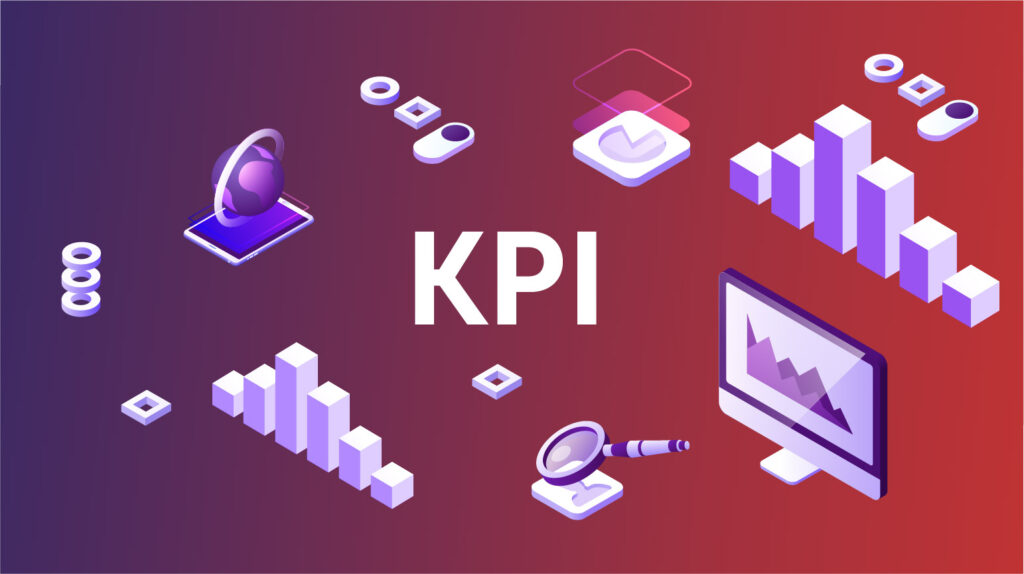Sales Channels – What Are They and What Types Exist?

Regardless of the industry, a company’s success largely depends on how effectively it uses available sales channels. These channels determine how you reach potential customers, build relationships, and ensure a smooth customer experience after the purchase.
Choosing the right sales channels is never random. It’s a strategic decision based on market analysis and customer preferences. Some companies build their sales strategy around traditional, direct channels, while others increasingly invest in online sales channels — from e-commerce and social media platforms to mobile apps.
In this article, we’ll explain what sales channels really are, discuss the main types of sales channels, and show you how to match them to your business model so that you can effectively expand your reach and boost conversions.
Why Sales Channels Determine a Company’s Success
The way you reach your customer can be just as important as the product or service you sell. Choosing the wrong sales channel can make even the best company’s products invisible to buyers, while the right one can open doors to new market segments, increase profits, and strengthen customer loyalty.
Businesses that use multiple sales channels can serve customers both online and offline at the same time. A good example is a clothing brand that operates both retail stores and an online store. This allows them to reach a wider target market — some people prefer to try on clothes in a physical store, while others prefer to order quickly via the brand’s own website or mobile app.
In today’s digital era, the advantage belongs to organizations that can connect different sales channels and deliver a consistent customer journey. The key lies in selecting the right sales channel — one that fits both the product or service you offer and the needs of your target audience. Ultimately, your sales channel strategy decides whether your offer ends up in a customer’s shopping cart or gets overlooked in Google search results.
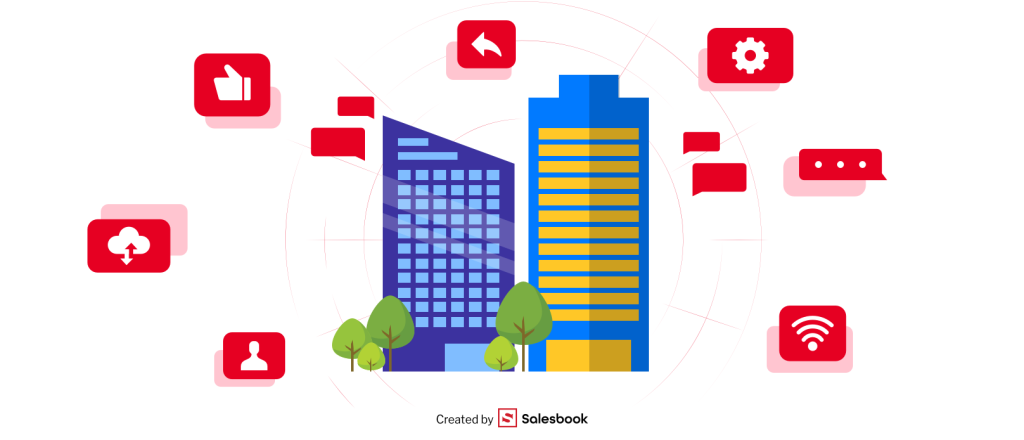
What Are Sales Channels? Definition and Importance
A sales channel is the pathway through which a company delivers its product or service to the customer. It can take many forms — a physical store, an online store, an online marketplace, a mobile app, a call center, or direct sales through sales agents and sales reps.
In practice, every sales channel serves three essential roles: it helps businesses reach their target audience, enables them to sell products more easily, and supports post-purchase customer experience. Today, few organizations rely on a single sales channel. Most use a mix of multiple sales channels to expand their reach, optimize performance, and build a loyal customer base.
For example, traditional retail stores such as grocery shops or brick and mortar stores still generate a large volume of retail sales, but their market share is steadily decreasing in favor of online sales channels like online marketplaces and digital distribution channels. That’s why many companies are building multichannel sales strategies that combine offline and online approaches to get the best of both worlds.
The value of each sales channel depends on the nature of the product or service. Electronic devices, for instance, often require hands-on testing in a physical store, while SaaS applications sell best online, supported by free trials or demos in mobile apps. In every case, success depends on consistent management across all your sales channels — ensuring that customers enjoy a seamless customer journey and brand identity no matter where or how they make a purchase.
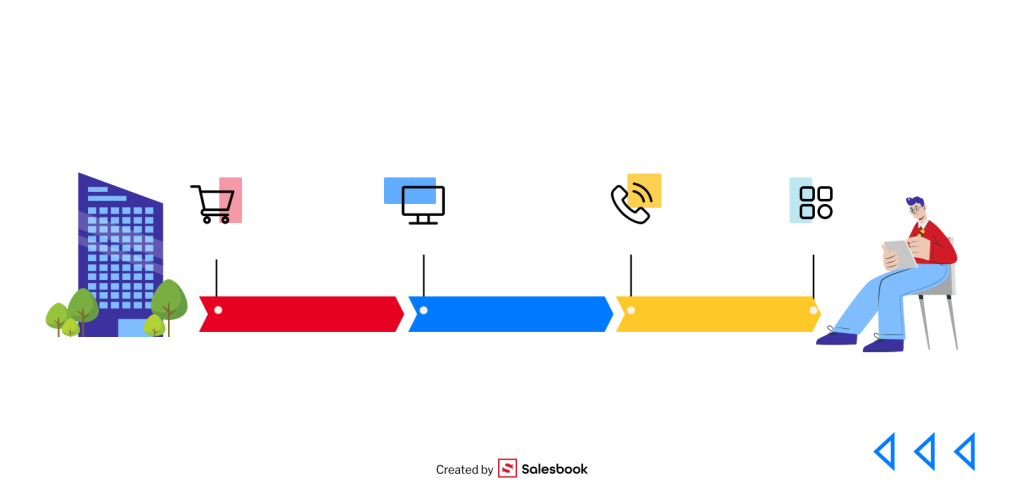
Traditional Sales Channels – A Foundation That Still Works
Although much is said today about the power of e-commerce and online sales channels, in many sectors traditional sales channels still play a vital role. Physical stores, distribution channels, and on-site sales help build trust, offer face-to-face contact, and give customers a sense of security when making a purchase.
These direct sales channels are especially important for products or services that require demonstrations or personal consultations. A good example is the food industry, where customers still prefer retail stores to personally evaluate the quality of the goods. Traditional retail sales channels are also powerful tools for building customer loyalty, as personal interaction fosters long-term relationships and higher customer satisfaction.
Companies that successfully combine traditional and modern forms gain a significant advantage — a customer can make a purchase in a physical store and later access the same products in an online store or mobile app. This approach strengthens both the brand identity and the overall customer experience.
Direct Sales
This sales channel involves reaching customers directly through the company’s own sales reps or sales agents. It allows for one-on-one presentation of the offer and the ability to tailor the product or service to the client’s needs.
This approach works particularly well in B2B sales and for more complex solutions, where the customer requires detailed explanations of benefits and functionalities. Direct sales remain one of the oldest yet most flexible sales channels — they build relationships, allow for negotiation, and provide a human touch that’s often missing in online sales.
Partner Networks and Offline Distribution
Another essential element of traditional sales channels is the partner network — wholesalers, distributors, or franchisees. These indirect channels help expand a brand’s reach and quickly attract potential customers without the need to build a company-owned infrastructure.
Retail stores run by partners (such as franchise grocery shops) complement the company’s main distribution channels. This solution enables brands to maintain control over service quality while scaling sales into new markets.
When well-managed, retail partners and distribution channels become a stable extension of the sales strategy — enhancing brand visibility, providing access to new sales channels, and helping businesses sell products more effectively, all while protecting profit margins and minimizing operational costs.

Online Sales Channels – How the Internet Transformed the Market
Digitalization has completely reshaped the way companies sell products and services. A decade ago, direct sales and traditional retail stores dominated the market; today, a growing share of transactions flows through online sales channels. The internet has opened new possibilities for reaching the target audience — from online stores and social media platforms to dedicated mobile apps.
For many businesses, online sales channels have become the backbone of their sales strategy. They enable companies to reach thousands of potential customers without physical locations and to scale their business model globally. What’s more, modern customers expect flexibility — they want to choose where and how they make a purchase.
That’s why an effective sales channel strategy focuses on integrating multiple channels — allowing a customer to start a purchase in an online store, continue in a mobile app, and finalize it with a consultant. This seamless connection means traditional and digital sales channels no longer compete — they complement each other, creating a unified customer journey that drives growth.
Websites and E-Commerce
An online store is now an absolute must-have. This is where customers browse offers, compare prices, and make purchases conveniently. Online stores are among the most common sales channels because they give companies full control over the product presentation and buying process.
E-commerce also allows for personalization. By analyzing customer data, companies can deliver tailored recommendations and boost conversion rates. Moreover, compared to direct sales, online sales let businesses sell products 24/7 — without limitations of time zones or location.
Well-optimized online marketplaces and own websites help maintain brand consistency and reinforce brand identity. This makes e-commerce not just a sales channel, but a powerful branding tool that enhances both visibility and trust.
Social Media as a Sales Channel
Social media is no longer just a communication tool — it has become one of the most effective sales channels. Platforms such as Facebook, Instagram, LinkedIn, and TikTok allow companies to reach a clearly defined target market and conduct referral sales naturally integrated into users’ everyday online experiences.
Selling through social media platforms has another advantage — it enables instant interactions and real-time support. While it doesn’t replace in-person contact, it provides vast opportunities to strengthen relationships and improve the customer experience. For this reason, social commerce is now considered one of the most powerful new sales channels in modern organizations.
Smart brands use social media not only to generate sales, but also to collect useful customer data, test marketing channels, and develop deeper customer insights that guide future sales strategies.
Mobile Apps – Convenience for the Customer
The rapid growth of smartphones has made mobile apps one of the most convenient ways to make purchases. Customers appreciate their simplicity, accessibility, and the ability to manage the entire buying process in just a few taps — from browsing to payment.
Mobile apps are especially relevant in industries where speed and comfort matter, such as food delivery or digital services. They also enhance customer satisfaction by streamlining communication, improving accessibility, and supporting customer loyalty programs.
With features like push notifications, order tracking, and built-in rewards, mobile apps not only help businesses sell products more effectively but also strengthen customer relationships. In many cases, an app becomes a natural extension of both traditional and online sales channels, connecting direct channels and indirect channels into one cohesive experience.
As a result, companies that invest in multichannel sales — combining retail stores, online platforms, and mobile solutions — are better positioned to build strong, lasting relationships with their end customers and ensure consistent, high-quality customer experience across all their sales channels.
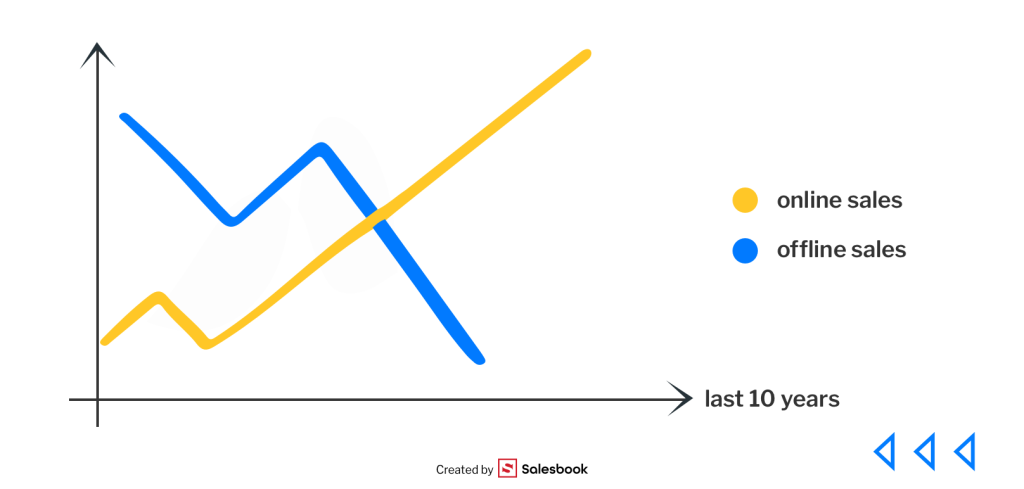
Omnichannel – Connecting Sales Channels into a Seamless Experience
Today’s customers expect complete consistency — whether they buy in an online store, through a mobile app, or talk directly with a sales rep. The omnichannel model is based on integrating different sales channels so that the customer experience feels unified, smooth, and effortless.
For example, a grocery shopper might check product availability online, pick up the order at a local retail store, and rely on instant customer service via live chat if any issue arises. This approach removes barriers between offline and online sales channels, boosting customer satisfaction and trust in the brand.
Omnichannel strategies help companies build stronger relationships with customers and execute their overall sales strategy more effectively. In practice, this means that every touchpoint — from the own website to direct channels like face-to-face contact — must work together seamlessly.
When executed properly, multiple sales channels no longer operate in isolation. Instead, they reinforce one another, creating a single, cohesive customer journey that strengthens brand identity and drives long-term customer loyalty.
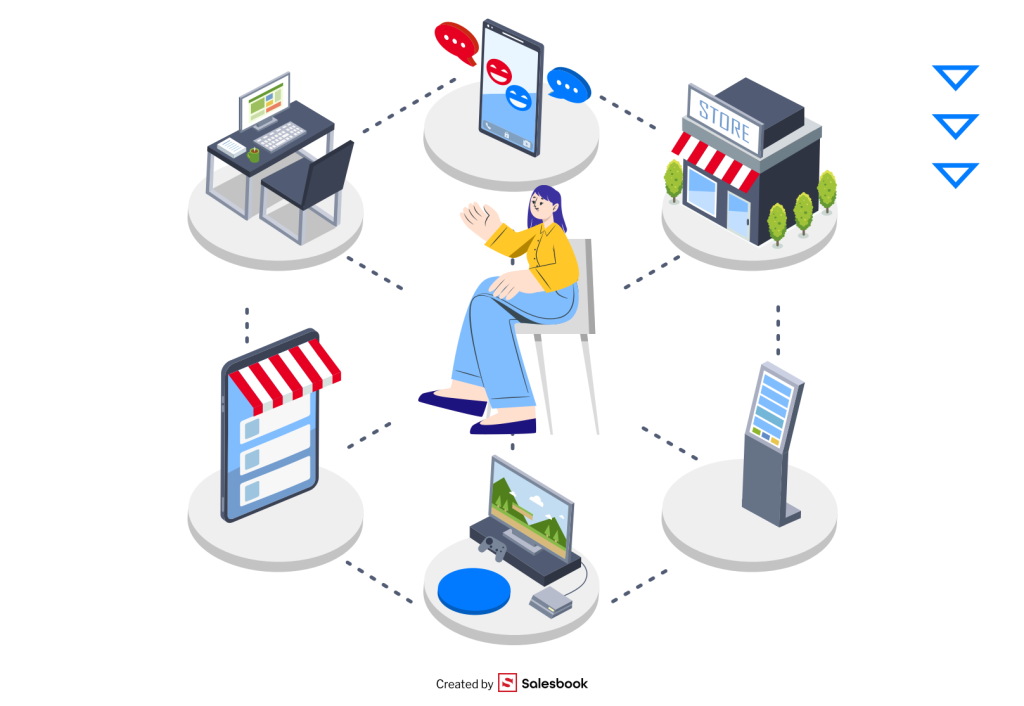
How to Choose the Right Sales Channels for Your Business
Selecting the right sales channels is a strategic decision. It’s not about being “everywhere,” but about focusing on the sales channels that best meet your customers’ needs and align with your company’s capabilities.
Analyzing Your Target Audience
The first step is to understand your target audience — where they buy, how often they shop, and which buying methods they prefer. For younger consumers, social media and mobile apps are natural choices, while in industries like food and retail, physical stores and direct channels still dominate.
Collecting and analyzing customer data about habits and preferences allows you to match sales channels to customer behavior more effectively. This helps build a multichannel sales strategy that supports both online platforms and retail sales channels, depending on where your end customers are most active.
Costs and Potential of Each Channel
Not all sales channels come with the same setup and maintenance costs. An online store requires investment in the platform and promotion, while customer support involves ongoing personnel costs. On the other hand, the sales potential of online marketplaces or an own website can far exceed that of a single retail store.
Evaluating ROI for each sales channel is crucial. It helps you determine which ones deliver the highest profit margins and which may drain resources. For some companies, direct to consumer and business to business approaches may coexist — balancing direct channels and indirect channels to optimize both scale and cost-efficiency.
Measuring the Effectiveness of Sales Channels
Each sales channel should be evaluated using clear metrics. In e-commerce, key indicators include conversion rate and average order value. In direct sales, it may be the number of meetings that end in a transaction, while in mobile apps — the number of active users.
All this data should feed into a central system, ensuring consistent customer experience, reporting, and alignment across all your sales channels. With such useful customer data, businesses can easily compare different sales channels and decide which ones are worth expanding — and which should be scaled down.
This structured approach lays the foundation for an effective sales channel strategy, helping your company reach more potential customers, improve customer satisfaction, and sustain long-term growth.

The Most Common Mistakes in Managing Sales Channels
Many companies invest in several types of sales channels, yet overlook one crucial element — consistency. The most common mistakes include:
- Inconsistent communication – customers are treated differently in a physical store than they are online.
- Lack of investment in customer service, leading to frustration and a decline in customer satisfaction.
- Poor channel alignment – trying to sell products that require consultation (e.g., expensive or complex products or services) exclusively online, without proper support.
- Overreliance on a single sales channel instead of integrating multiple sales channels, which would allow greater flexibility and control.
Avoiding these mistakes requires both the right technology and a solid sales strategy. A unified CRM system, shared procedures, and regular training ensure that every customer journey remains consistent across all your sales channels.
When each sales team follows the same standards — whether in direct sales channels, online marketplaces, or retail sales channels — customers enjoy a seamless experience, and the company gains stronger customer loyalty and higher profit margins.
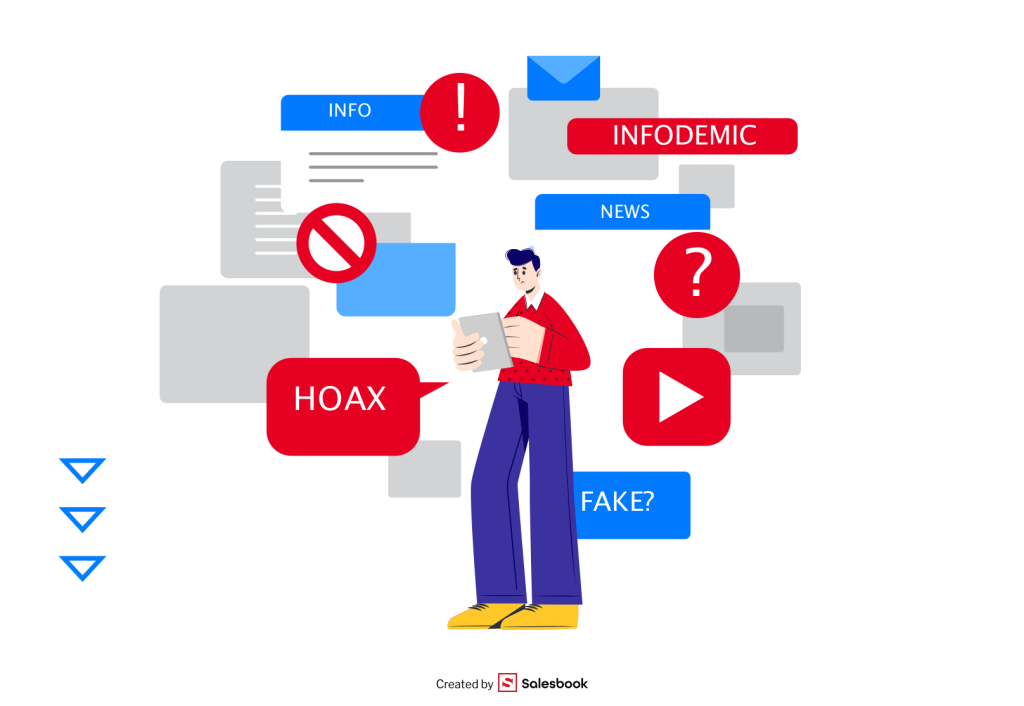
The Future of Sales Channels – What Trends Will Dominate?
The market clearly shows that customer service will become the key differentiator. Whether a customer buys in a physical store, via a mobile app, or through social media platforms, they now expect instant response and a high level of support.
The rise of artificial intelligence and automation will enable businesses to respond faster and personalize every customer experience. Integration across multiple sales channels will become even more crucial, as the boundaries between online and offline disappear completely. Companies that adapt to these trends will not only increase sales but also retain existing customers more effectively through a consistent and seamless service model.
Sales Channels as a Strategic Growth Tool
Whether we’re talking about traditional retail stores, online marketplaces, or mobile apps, the main types of sales channels share one common goal — they allow customers to choose how they want to buy and interact with a brand.
It’s not the number of sales channels that determines success, but how well they are connected and managed. The best organizations invest in CRM systems and omnichannel solutions that support the entire sales process — from the first contact to the final transaction.
Well-chosen and integrated sales channels are no longer a cost but an investment in competitive advantage, customer loyalty, and long-term growth. Businesses that master multichannel sales will gain not only higher profit margins but also stronger relationships with end customers.
FAQ – Frequently Asked Questions About Sales Channels
1. What are sales channels?
Sales channels are the various paths a company uses to reach customers and enable purchases. They can include retail stores, direct sales channels, online stores, social media platforms, online marketplaces, or mobile apps. Some companies also collaborate with third party sellers or resellers who buy in bulk and distribute their company’s products further — this model expands reach while keeping operational costs low.
2. What are the main types of sales channels?
They are typically divided into traditional retail sales channels (e.g., brick and mortar stores, partner networks, personal selling) and online sales channels (e.g., online stores, online marketplaces, social media, or mobile apps). There are also indirect sales models, where resellers purchase products from the manufacturer and sell them to end customers via other sales channels such as niche marketplaces or distribution partners.
3. Why should a company use multiple sales channels at once?
Because different customer segments have different preferences. Some prefer to shop online, others want to see the product in person. By using several sales channels — such as direct sales, online channels, and indirect channels — a business can reach a wider target market, attract other businesses, and diversify its revenue streams.
In addition, companies can experiment with white label sales, allowing other businesses to sell their products or services under their own branding. This model provides a low-risk way to open more sales channels and strengthen partnerships without diluting the core brand identity.
4. What is omnichannel?
Omnichannel is a multichannel sales strategy where all sales channels are interconnected. A customer might start a purchase online and finish it in a retail store, or vice versa. The goal is to ensure a consistent, high-quality customer journey and customer experience across all touchpoints.
Modern omnichannel systems also integrate indirect sales and white label sales, ensuring that even when other businesses represent your brand, customers still experience the same quality and service standards.
5. How to choose the right sales channels for your company?
Analyze your target audience, costs, and potential of each distribution channel, then measure performance regularly. For some industries, online channels such as niche marketplaces or social media are the most effective. For others, direct sales or collaboration with third party sellers works better.
The ideal mix of sales channels depends on your business model, product type, and customer expectations. Introducing more sales channels — including partnerships or white label sales — can help companies sell products more efficiently, scale faster, and enter new markets.
6. What are the most common mistakes companies make in managing sales channels?
The most frequent ones are inconsistent communication between different sales channels, neglecting customer service, using the wrong channel for specific products or services, and failing to integrate direct channels with indirect sales partners.
Some organizations also overextend by adding more sales channels without a clear integration plan. Others rely too heavily on third party sellers, losing control over customer data and brand identity. A balanced approach — supported by strong CRM and sales software — ensures scalability without chaos.
7. What trends will dominate the future of sales channels?
The coming years will bring full integration between online and offline sales channels, driven by AI, automation, and real-time customer insights. We’ll also see the rise of white label sales, niche marketplaces, and partnerships with other businesses, helping brands reach new audiences faster.
At the same time, companies will strengthen cooperation with resellers and third party sellers as part of broader indirect sales ecosystems. Success will depend on the ability to synchronize all your sales channels — both direct and other sales channels — to provide a unified, data-driven, and highly personalized customer experience.
Table of Contents


